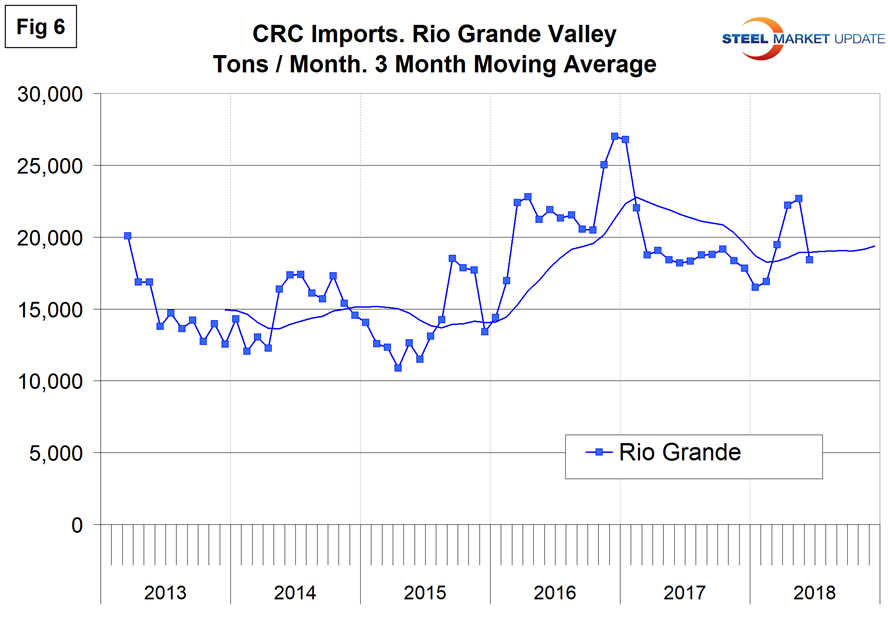Prices

August 18, 2018
SMU Imports Report: CRC Down 23.1 Percent in June
Written by Peter Wright
The Great Lakes and Gulf dominate as entry points for cold rolled imports. There are big differences in the year to date decreases on a regional basis, according to Steel Market Update’s latest analysis of government data.
Imports of cold rolled coil into the U.S. as a whole were down 23.1 percent year to date in June, but the Atlantic South was down by 56 percent and the Rio Grande Valley was up by 2.5 percent.
SMU now offers a comprehensive series of import reports ranging from the first look at licensed data to the very detailed look at volume by district of entry and source nation. The report you are reading now is designed to plug the gap between these two. Our intention is to report regional imports for two of six flat rolled products each month. This month, (August), we are reporting on hot and cold rolled sheet through June. Next month, we will report on coiled and cut-to-length plate, and in October we will report on coated products.
![]() National level import reports do a good job of measuring the overall market pressure caused by the imports of individual products. The downside is that there are huge regional differences.
National level import reports do a good job of measuring the overall market pressure caused by the imports of individual products. The downside is that there are huge regional differences.
Figure 1 shows the year-to-date tonnage into each region and the dominance of the Great Lakes and Gulf.
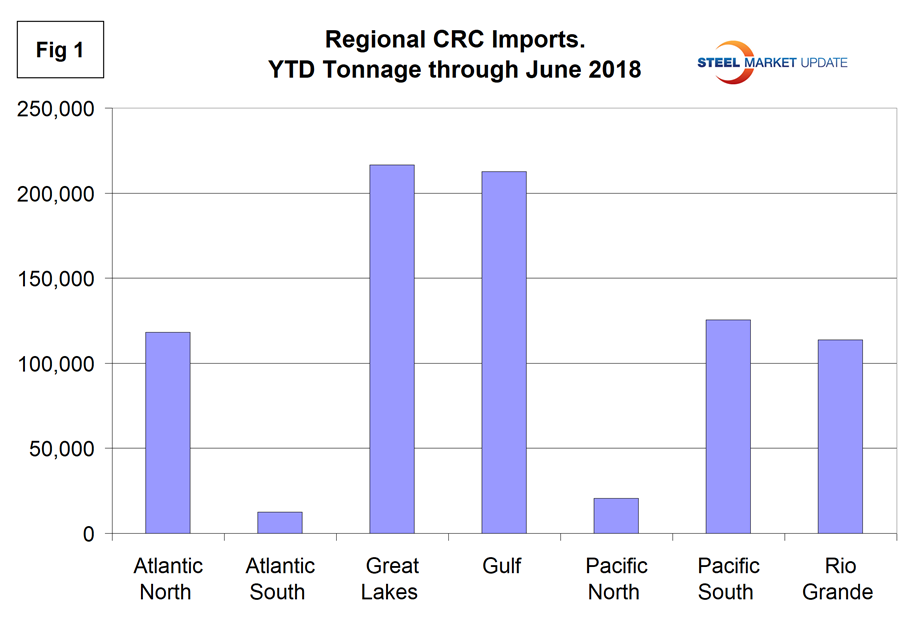
Figure 2 shows the year-to-date change for each of seven regions and the change at the national level. Volume declined this year through June in all regions except the Rio Grande valley. The two dominant regions, the Great Lakes and Gulf, were down by 18.9 and 26.2 percent, respectively.
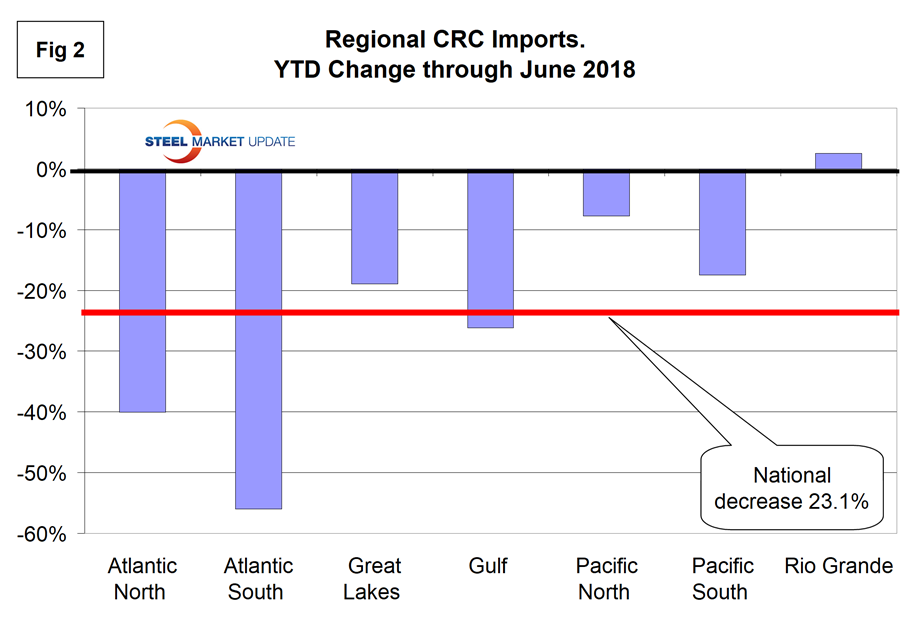
Figures 3, 4, 5 and 6 show the history of CRC coil imports by region since March 2013 on a three-month moving average basis.
Imports into the Pacific South have been drifting down since late 2016. Volume into the Pacific North has been minimal during the time of this study.
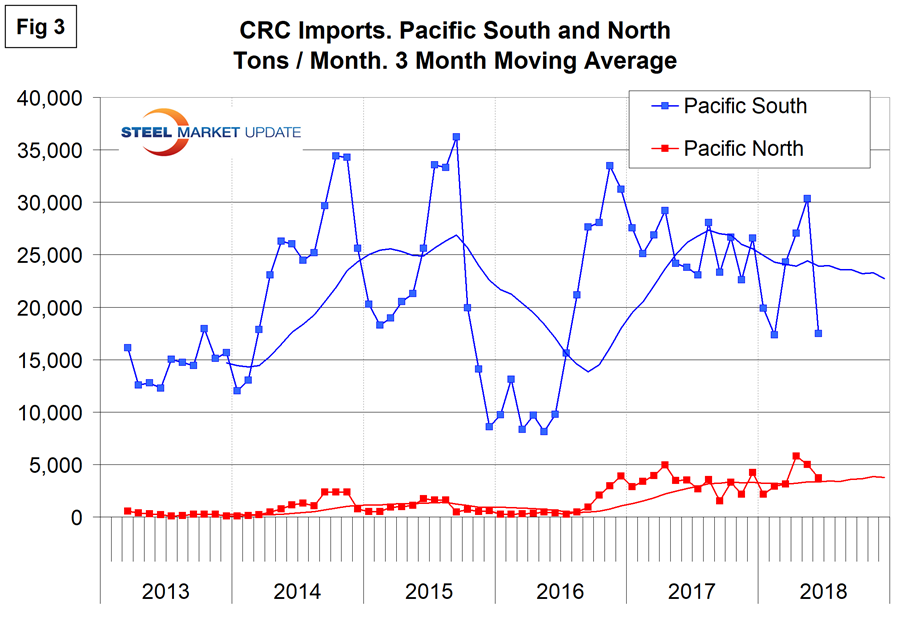
Imports into the North Atlantic spiked last year as tonnage arrived in Philadelphia from Russia. The South Atlantic region received little volume.
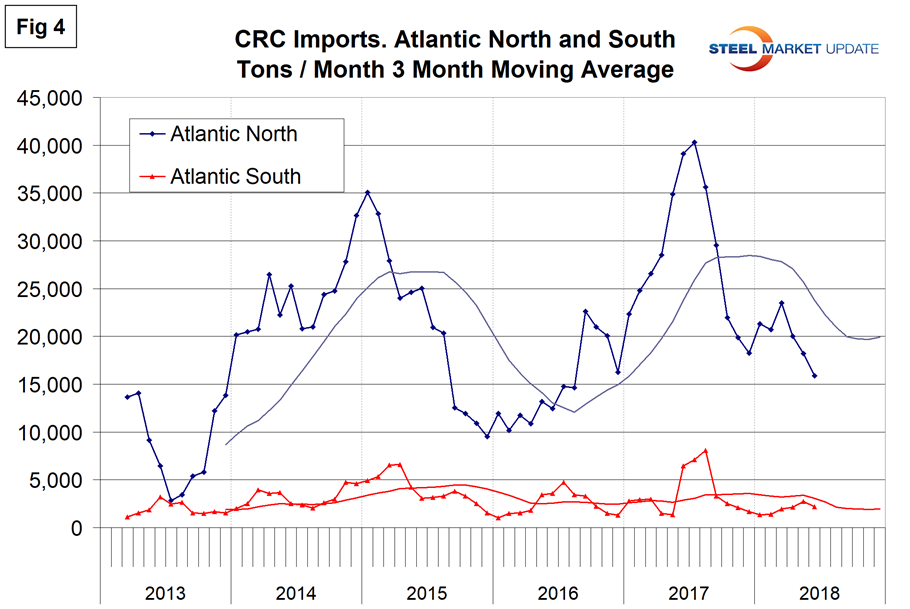
Imports into the Great Lakes and Gulf, which are the highest volume regions for cold rolled, have been almost identical in the first half of 2018. Both trended down in the second half of 2017.
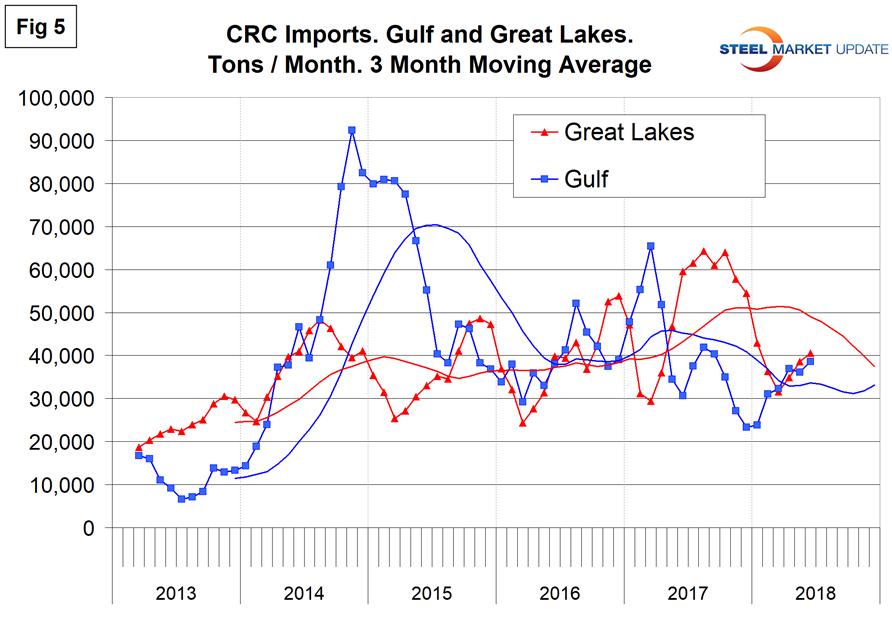
Tonnage out of Mexico, almost all through Laredo, has been relatively consistent for a year and a half.
